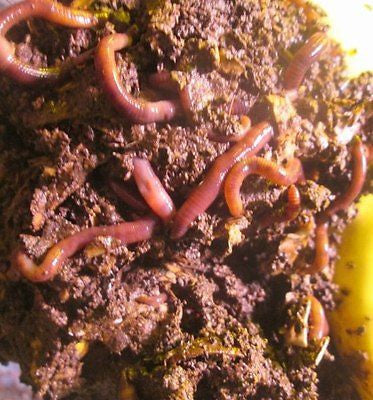Top-rated red wigglers: Use them to reduce waste
Top-rated red wigglers: Use them to reduce waste
Blog Article
Using Red Wigglers for Effective Organic Garbage Disposal
The usage of red wigglers for organic garbage disposal provides a compelling approach to managing food scraps while promoting environmental sustainability. These worms not just enhance waste disintegration yet likewise generate useful worm castings, which can significantly enhance soil health and wellness. Their capability to refine huge quantities of natural product with very little effort positions them as an accessible remedy for homes and communities alike. However, understanding the nuances of establishing up a successful worm bin and preserving an ideal habitat is important for maximizing their benefits. The next action in this process may shock you.
Benefits of Using Red Wigglers
Among the most compelling advantages of using red wigglers for organic waste disposal is their impressive effectiveness in composting. These worms, medically called Eisenia fetida, are especially adapted for damaging down organic materials, allowing them to refine waste up to two times their body weight each day. This rapid decay not just accelerates the composting procedure however additionally produces nutrient-rich worm spreadings that dramatically enhance soil high quality.
Furthermore, red wigglers add to a reduction in land fill waste. By diverting organic products from land fills, they aid lessen methane exhausts-- a powerful greenhouse gas. This environmental benefit is vital in the fight versus environment modification.
In addition, red wigglers are low-maintenance and can flourish in different settings, making them accessible for both amateur and experienced composters. Their ability to duplicate promptly ensures a consistent populace, promoting recurring waste processing.
Establishing Your Worm Bin
Developing an effective worm bin is crucial for maximizing the benefits of composting with red wigglers. The primary step is choosing a proper container. A bin constructed from plastic or wood, with a capability of 10 to 20 gallons, is ideal. Ensure the bin has appropriate drain holes to avoid excess wetness, as red wigglers prosper in a wet yet not soggy environment.
(Lake Rhodhiss Worms)Following, prepare the bed linens product, which offers as the worms' habitat and food resource. The bin needs to be positioned in a dark, temperature-controlled area, preferably in between 55 ° F and 77 ° F, to preserve worm activity.
As soon as the bin is set up, present the red wigglers, permitting them to adapt to their brand-new environment. A properly maintained bin will not only support the health and wellness of the worms yet also facilitate efficient disintegration of organic waste.
(red wiggler composting worms)
What to Feed Red Wigglers
An understanding of the proper diet plan for red wigglers is crucial for preserving a healthy worm population and maximizing composting efficiency. These products not just supply important nutrients but also add to the dampness equilibrium within the worm bin.
It is important to avoid certain foods that can damage the worm populace. Red wigglers should not be fed meat, milk items, oily foods, or refined items, as these can draw in insects and develop unpleasant odors. red wigglers. Furthermore, citrus fruits and hot foods ought to be decreased, as their level of acidity can be destructive to worms
Monitoring the worm container for food consumption prices will certainly aid make certain that red wigglers are obtaining an ample diet while keeping an efficient composting setting. Appropriate feeding practices are crucial for cultivating a growing community within the worm bin.
Maintaining Your Worm Habitat
A properly maintained worm environment is vital for the wellness and performance of red wigglers. To make sure optimum conditions, it is critical to keep track of temperature, address moisture, and aeration within the worm container (red wigglers).
A great guideline of thumb is to preserve dampness at roughly 70% to 80%. If the bed linen ends up being also wet, it can lead to anaerobic conditions that are unsafe to the worms.

Using Worm Castings in Horticulture
Rich in nutrients and advantageous microorganisms, worm castings function as an outstanding organic plant food for horticulture. Created through the digestion processes of red wigglers, these castings include an array of necessary nutrients, consisting of nitrogen, phosphorus, and potassium, which promote robust plant development. Unlike artificial plant foods, worm castings use a slow-release device, guaranteeing that nutrients are readily available to plants over a prolonged duration, thus reducing the threat of nutrient leaching and dirt exhaustion.
In addition to nutrition web content, worm castings boost soil framework and aeration, boosting wetness retention and water drainage. The microbial life present in worm castings assists to subdue virus and promotes a healthy soil environment, further profiting plant health and wellness. When incorporated into the dirt or made use of as a leading dressing, worm spreadings can significantly improve seed germination rates, root growth, and overall plant vigor.
For optimal results, garden enthusiasts need to use worm castings at a price of 1-2 inches per square foot, blending them into the soil or integrating them into potting mixes. Overall, using worm spreadings is an environment-friendly technique to enhancing dirt fertility and making sure prospering yard environments.
Verdict

Report this page